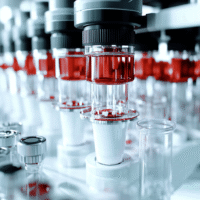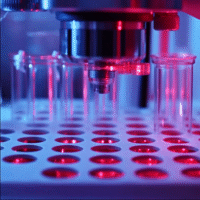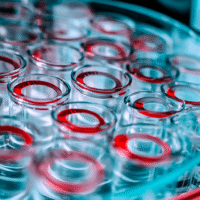Understanding the Trial Results of Photodynamic Therapy for Peripheral Lung Cancer
What is Photodynamic Therapy (PDT)?
Photodynamic Therapy (PDT) is a treatment that uses a special light-sensitive drug and a low-power laser to target cancer cells. This method has been used for lung cancers located in the center of the lungs, but now researchers are exploring its use for cancers located on the edges (peripheral lung cancer).
What Did the Study Find?
The study involved patients with a type of lung cancer called non-small cell lung cancer. These patients had tumors that were 25 mm or smaller and could not have surgery or radiation therapy. The researchers compared two groups:
- PDT Group: 35 patients received PDT.
- Best Supportive Care (BSC) Group: 19 patients received standard care without PDT.
The main goal was to see how long patients could live without their cancer getting worse (progression-free survival or PFS). The results showed:
- The PDT group had a median PFS of 12.7 months.
- The BSC group had a median PFS of only 4.1 months.
This means patients receiving PDT had a significantly longer time without cancer progression compared to those who only received supportive care.
What Worked and What Didn’t?
PDT worked well in prolonging the time patients lived without their cancer getting worse. It was also safe, with only a small number of serious side effects (5.9% of patients). In contrast, the BSC group had no serious side effects but did not benefit from the same level of cancer control.
How Does This Help Patients and Clinics?
This study shows that PDT can be a valuable treatment option for patients with peripheral lung cancer who cannot undergo surgery or radiation. It helps maintain lung function and improves the quality of life for these patients.
Real-World Opportunities for Hospitals and Doctors
- Implement PDT as a treatment option for eligible patients with peripheral lung cancer.
- Train medical staff on the use of the new laser probe developed for PDT.
- Monitor patient outcomes to gather more data on the effectiveness of PDT.
Measurable Outcomes to Track
- Progression-free survival (PFS) rates for patients receiving PDT.
- Overall survival (OS) rates.
- Quality of life assessments before and after treatment.
- Incidence of side effects related to PDT.
AI Tools That Could Help
Consider using AI tools for:
- Patient data management to track outcomes and side effects.
- Predictive analytics to identify which patients might benefit most from PDT.
Step-by-Step Plan for Clinics
- Start by training staff on PDT and the new laser technology.
- Identify patients who are eligible for PDT based on the study criteria.
- Begin with a small group of patients to monitor outcomes closely.
- Gradually expand the program as more data becomes available and staff gain experience.
- Regularly review patient outcomes and adjust treatment protocols as needed.
For more detailed information on this research, you can read the full study here.



























